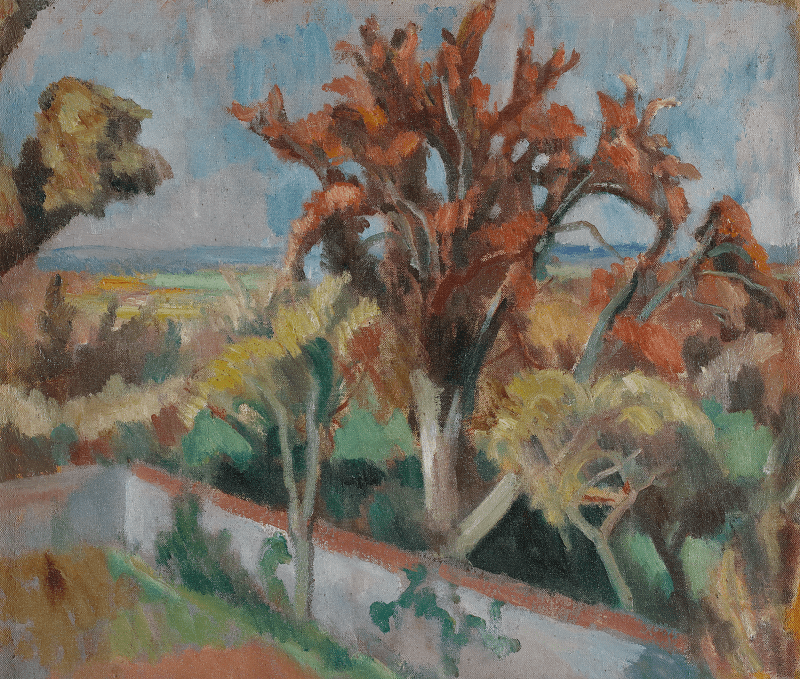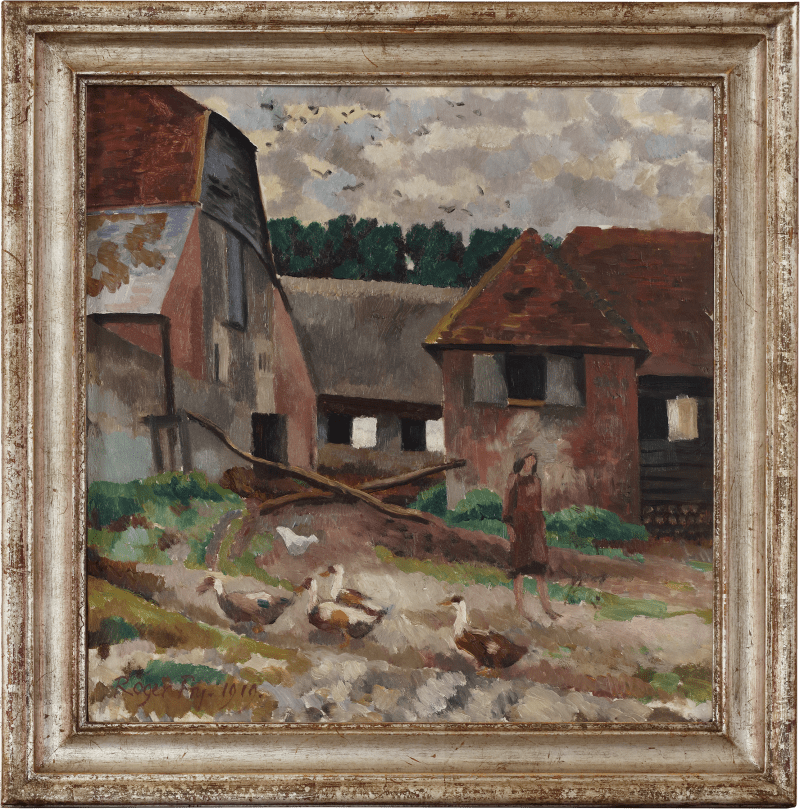Artist, critic and tastemaker Roger Fry is one of the most influential figures in British art history. He was a leading champion of modern art, coined the term Post-Impressionism, and introduced the British public to a new artistic frisson of European modernism. Autumn Landscape, South of France is a distinctly Bloomsbury homage to Paul Cézanne, the French giant of Post-Impressionism who Fry revered above all other modern artists. This period marked some of Fry's finest works, characterised by his exploration of the southern French landscape.
In October 1919, Fry visited Cézanne's hometown of Aix-en-Provence and his landscapes from this period reflect a clear nod to his work. Fry championed Cézanne and wrote extensively on his revolutionary approach to form and colour in his landmark publication Vision and Design, published the same year as this painting. Fry’s understanding of Cézanne's technique is evident in this work, which is meticulously built up through layers of colour to construct volume, depth and...
Artist, critic and tastemaker Roger Fry is one of the most influential figures in British art history. He was a leading champion of modern art, coined the term Post-Impressionism, and introduced the British public to a new artistic frisson of European modernism. Autumn Landscape, South of France is a distinctly Bloomsbury homage to Paul Cézanne, the French giant of Post-Impressionism who Fry revered above all other modern artists. This period marked some of Fry's finest works, characterised by his exploration of the southern French landscape.
In October 1919, Fry visited Cézanne's hometown of Aix-en-Provence and his landscapes from this period reflect a clear nod to his work. Fry championed Cézanne and wrote extensively on his revolutionary approach to form and colour in his landmark publication Vision and Design, published the same year as this painting. Fry’s understanding of Cézanne's technique is evident in this work, which is meticulously built up through layers of colour to construct volume, depth and light. The two trees flanking the composition construct a visual frame through which to view the receding townscape and mountainous backdrop.
Fry’s trip to the hometown of his artistic hero was prompted by the closure of the Omega Workshops, the art and design enterprise founded and run by Fry with his Bloomsbury counterparts Vanessa Bell and Duncan Grant from 1913 to 1919. In Fry’s biography, Virginia Woolf noted the sense of freedom and relief he felt after relinquishing control over Omega, which permitted the artist more time to travel, paint, and write. His first trip abroad after Omega's closure was to France. He wrote to Vanessa Bell about the excitement of revisiting the southern colours: ‘It’s too exciting to see this Southern colouring again … Every bit of odd wall, every tiled roof seems as though it were exactly right, and only needed to be painted.’ The French countryside was a powerful creative stimulus for Fry and remained an important source of inspiration until his death in 1934.








